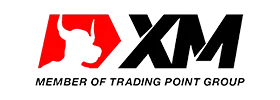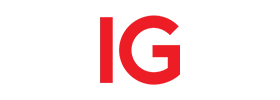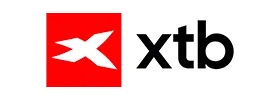The US Tech 100, also known as the Nasdaq-100, is one of the most prominent indices globally, representing the innovation and technological prowess of the United States. This index captures the performance of 100 of the largest non-financial companies listed on the Nasdaq Stock Market, making it a favorite among traders and investors. This comprehensive guide provides essential information about US Tech 100 brokers and insights into trading this dynamic index.
Below you can find a list with the best US Tech 100 Index Brokers:
Top 6 Brokers for trading US Tech 100
-
FP Markets
- Australia and CySEC regulated broker
- MT4/MT5, TradingView, Ctrader, Iress
- EUR/USD spread from 0.0 pips
Trading InstrumentsDeposit Methods- Commodities CFDs
- Crypto CFDs
- Energy CFDs
- Forex CFDs
- Indices CFDs
- Metals CFDs
- Stock CFDs
-
Fusion Markets
- Australia regulated broker
- MT4, MT5, TradingView, Ctrader
- Leverage up to 500
Trading InstrumentsDeposit Methods- Commodities CFDs
- Crypto CFDs
- Forex CFDs
- Indices CFDs
- Metals CFDs
- Stock CFDs
-
ActivTrades
- Winner of 20+ Global Awards
- MT4/MT5, TradingView
- Leverage up to 1:400
Trading InstrumentsDeposit Methods- Bonds CFDs
- Commodities CFDs
- Crypto CFDs
- ETF CFDs
- Forex CFDs
- Indices CFDs
- Share CFDs
-
XM Group
- XM provides great trading experiences using MetaTrader 4 and MetaTrader 5, which are improved by personalized features.
- Zero commission accounts are available
- Top-tier regulation from CySEC, ASIC, FSC, and DFSA oversee XM's operations, assuring transparency and client safety.
Trading InstrumentsDeposit Methods- Bonds CFDs
- Commodities CFDs
- Crypto CFDs
- Energy CFDs
- ETF CFDs
- Forex CFDs
- Forex Options
- Index Options
- Indices CFDs
- Metals CFDs
- Share CFDs
- Stock CFDs
- Stock Options
- US Stock Options
-
IG
- Offers different account types, including DMA (Direct Market Access) one
- Offers turbo warrants on forex pairs, commodities, indices, and equities
- Supports popular platforms like MT4 and TradingView as well as ProRealTime, L2, and more
Trading InstrumentsDeposit Methods- Bond Futures
- Bond Options
- Bond Spread Betting
- Bonds CFDs
- Commodities CFDs
- Commodity Futures
- Commodity Options
- Commodity Spread Betting
- Crypto CFDs
- Crypto Options
- Crypto Spread Betting
- Currency Futures
- Energy CFDs
- Energy Futures
- Energy Options
- Energy Spread Betting
- ETF CFDs
- ETF Options
- ETF Spread Betting
- Forex CFDs
- Forex Options
- Forex Spread Betting
- Index Futures
- Index Options
- Index Spread Betting
- Indices CFDs
- Interest Rate Futures
- Metal Futures
- Metal Options
- Metals CFDs
- Metals Spread Betting
- Share CFDs
- Stock CFDs
- Stock Options
- Stock Spread Betting
- US Stock CFDs
- US Stock Options
- US Stock Spread Betting
-
XTB
- XTB is a publicly traded company regulated by FCA and CySEC
- XTB's proprietary mobile app enables traders to trade from anywhere
- Commission-free stock trading with no platform fees and direct access to thousands of shares
Trading InstrumentsDeposit Methods- Commodities CFDs
- Crypto CFDs
- Energy CFDs
- ETF CFDs
- Forex CFDs
- Indices CFDs
- Metals CFDs
- Share CFDs
- Stock CFDs
- US Stock CFDs
Brokers Compared by Spread
| Brand | Commission per lot | |
|---|---|---|
| FP Markets | AVG 1.2 pips | $0 Standard Account; $6 round turn on Pro Account |
| Fusion Markets | AVG 0.93 pips | $0 Classic Account, $4.50 round turn on Zero Account |
| ActivTrades | AVG 0.5 pips | $0 |
| XM Group | AVG 1.2 pips | $0 Ultra Low Micro and Ultra Low Standard Accounts; $3.50 per side XM Zero Account |
| IG | MIN 0.6 pips | $0 |
| XTB | AVG 0.9 pips | $0 |
FX Brokers Deposit Method Comparison
| Brand | Minimum deposit | |
|---|---|---|
| FP Markets | $50 (AU$100) | |
| Fusion Markets | $0 | |
| ActivTrades | $0 | |
| XM Group | $5 | |
| IG | $50 | |
| XTB | $250 |
Brokers by Regulator
| Brand | Maximum leverage | |
|---|---|---|
| FP Markets | 1:500 (CySEC | Pro Account), 1:30 (ASIC | Retail Account), 1:30 (CySEC | Retail Account), 1:500 (FSAS | Retail Account) | |
| Fusion Markets | 1:500 (ASIC | Pro Account), 1:30 (ASIC | Retail Account), 1:500 (VFSC | Retail Account) | |
| ActivTrades | 1:400 (CMVM | Pro Account), 1:30 (CMVM | Retail Account), 1:1000 (FSC), 1:200 (SCB) | |
| XM Group | 1:30 (CySEC | Retail Account), 1:1000 (IFSC | Retail Account) | |
| IG | 1:222 (BaFin | Pro Account), 1:30 (ASIC | Retail Account), 1:30 (BaFin | Retail Account), 1:200 (BMA | Retail Account), 1:30 (FCA | Retail Account) | |
| XTB | 1:200 (CySEC | Pro Account), 1:30 (CySEC | Retail Account), 1:30 (FCA | Retail Account), 1:500 (IFSC | Retail Account) |
Forex Brokers Platform Availability
| Brand | FX pairs to trade | |
|---|---|---|
| FP Markets | cTrader, TradingView | |
| Fusion Markets | cTrader, MetaTrader 4, MetaTrader 5, TradingView | |
| ActivTrades | MetaTrader 4, MetaTrader 5, Proprietary Web, TradingView | |
| XM Group | MetaTrader 4, MetaTrader 4 MultiTerminal, MetaTrader 5, Proprietary Mobile, Proprietary Web | |
| IG | MetaTrader 4, Proprietary Web, TradingView | |
| XTB | Proprietary |
Comprehensive Comparison of the Best CFD brokers for trading US Tech 100/ NASDAQ 100
Understanding the US Tech 100 Index
The US Tech 100 is a market capitalization-weighted index that comprises companies across various industries, including technology, healthcare, consumer services, and industrials, however, its composition includes primarily non-financial companies, and it is mostly driven by the tech sector. Launched in 1985, the index is a benchmark for the tech sector and the broader innovation economy.
Key Facts About the US Tech 100
- When Was It Established?
The Nasdaq-100 index was introduced on January 31, 1985 by the National Association of Securities Dealers (NASD). Initially, it included only the largest non-financial companies, and over time, it has evolved to represent cutting-edge industries.
- What Kind of Index Is It?
The US Tech 100 is a market capitalization-weighted index, meaning that companies with larger market caps have a more significant impact on the index’s movements.
Some of the most influential companies in the US Tech 100 include:
- Apple Inc.
- Microsoft Corporation
- Amazon.com Inc.
- Alphabet Inc. (Google)
- Meta Platforms Inc. (Facebook)
- Tesla Inc.
- How Are Companies Selected?
The Nasdaq-100 includes the top 100 largest non-financial companies listed on the Nasdaq. Companies are evaluated based on their market capitalization and liquidity, ensuring the index reflects the performance of the most influential players.
Methods for Trading the US Tech 100 Index
Traders can access the US Tech 100 through various instruments, each offering unique opportunities and risks:
-
Contracts for Difference (CFDs)
CFDs enable traders to speculate on price movements of the US Tech 100 without owning the underlying assets. CFDs are widely used due to their leverage, allowing traders to open larger positions with less capital. They also allow short-selling, providing profit opportunities in both rising and falling markets. However, leverage can amplify both gains and losses, so risk management is essential.
-
Exchange-Traded Funds (ETFs)
ETFs tracking the Nasdaq-100 are popular among investors seeking diversified exposure to the index. ETFs are traded on stock exchanges and offer high liquidity and lower costs compared to mutual funds. They’re suitable for both short-term trading and long-term investment strategies.
-
Futures Contracts
Futures contracts involve agreements to buy or sell the US Tech 100 at a specified price on a future date. These instruments are highly leveraged and are typically used by experienced traders and institutional investors. Futures provide a high level of exposure but require substantial capital and expertise.
-
Options Trading
Options allow traders to buy or sell the US Tech 100 at a specific price within a set timeframe. These instruments are versatile and can be used for hedging, speculation, or implementing advanced trading strategies. Call options are used to benefit from price increases, while put options allow traders to profit from price declines.
-
Mutual Funds
Mutual funds that mimic the Nasdaq-100 are designed for long-term investors. These professionally managed funds pool capital from multiple investors to create a diversified portfolio that mirrors the index. While they offer less flexibility than ETFs, mutual funds provide the advantage of professional oversight.
Trading Hours for the US Tech 100
The US Tech 100 follows the trading hours of the Nasdaq Stock Market:
- Regular Trading Hours: Monday through Friday, 9:30 AM to 4:00 PM ET
- Pre-Market Trading: 4:00 AM to 9:30 AM ET
- After-Hours Trading: 4:00 PM to 8:00 PM ET
While trading during regular market hours is extremely busy, the US Tech 100 can experience considerable activity during pre-market and after-hours trading. Extended trading hours provide additional opportunities but come with reduced liquidity and higher volatility, requiring careful consideration.
Key Factors Influencing US Tech 100 Performance
The performance of the US Tech 100 is driven by a combination of macroeconomic, corporate, and global factors. Understanding these influences is vital for effective trading:
- Economic Indicators
Economic data such as GDP growth, inflation rates, and employment figures directly affect investor sentiment. Positive data can drive the index higher, while negative reports often lead to declines.
- Federal Reserve Policies
The Federal Reserve’s decisions on interest rates and monetary policy significantly impact the US Tech 100. For example, lower interest rates can boost tech stocks by reducing borrowing costs and encouraging investment.
- Corporate Earnings
Earnings reports from major constituents like Apple, Microsoft, and Amazon can cause significant fluctuations in the index. Strong earnings tend to lift the index, while weak results may pull it down.
- Technological Innovation
Breakthroughs in technology, such as advancements in artificial intelligence, cloud computing, or renewable energy, can drive the performance of companies in the index.
- Global Events
Geopolitical tensions, trade agreements, and global crises can create volatility in the US Tech 100. Events like trade wars or pandemics have historically had substantial impacts.
- Sectoral Trends
The US Tech 100 index is heavily weighted toward technology, but it also includes companies in healthcare, consumer services, and other sectors. Trends within these industries can significantly influence the overall index.
- Market Sentiment
Investor confidence, driven by news, forecasts, and broader economic outlooks, often dictates short-term movements in the US Tech 100. Sentiment can amplify existing trends, either boosting gains or deepening losses.
Things to consider when choosing a US Tech 100 Broker
Selecting a reliable broker is crucial for successful trading. Here are the key factors to consider:
- Competitive Spreads: Look for brokers offering tight spreads on US Tech 100 trades to minimize costs and maximize profits.
- Leverage Options: Ensure the broker provides leverage that aligns with your trading strategy and risk tolerance. While higher leverage can enhance profits, it also increases risks.
- Trading Platforms: Look for brokers with robust and user-friendly platforms like MetaTrader 4 (MT4), MetaTrader 5 (MT5), or proprietary solutions. Test the platform’s demo version to ensure it meets your requirements.
- Regulation: Choose brokers regulated by reputable authorities such as the SEC, FCA, or ASIC to ensure safety and transparency.
- Order Execution Speed: Fast and reliable execution is essential, especially in volatile markets. Look for brokers with low latency and efficient systems.
- Payment Methods: A variety of deposit and withdrawal options, including bank transfers, credit cards, and e-wallets, is a sign of a user-friendly broker.
- Customer Support: Ensure the broker offers responsive customer service through multiple channels, such as live chat, email, or phone. Multilingual support is an added advantage.
Tips for Trading the US Tech 100 Successfully
- Use Stop-Loss Orders: Stop-loss orders are essential tools for managing risk. By setting predefined exit levels, traders can automatically close positions once a trade reaches a certain loss threshold. This protects against significant losses in volatile market conditions. Ensure you set realistic stop-loss levels based on your strategy and the market’s behavior to avoid premature exits.
- Develop a Trading Plan: A well-thought-out trading plan is the foundation of successful trading. Base your strategy on comprehensive analysis, whether it’s technical analysis using charts and indicators, fundamental analysis focusing on economic data and earnings reports, or a combination of both. Define clear entry and exit points, risk tolerance, and profit targets to guide your decision-making.
- Manage Risk Effectively: Effective risk management involves limiting your exposure to prevent catastrophic losses. Never risk more than a small percentage of your total capital on a single trade. Utilize risk-reward ratios to evaluate whether a trade’s potential return justifies the risk. Position sizing—calculating the appropriate amount to invest per trade—is another critical aspect of risk management.
- Keep a Trading Journal: Maintaining a detailed trading journal allows you to track your progress and refine your strategy. Document each trade, including entry and exit points, reasons for taking the trade, outcomes, and lessons learned. Over time, this record will help you identify patterns in your trading behavior and improve your performance.
- Stay Updated: The US Tech 100 is heavily influenced by news, economic events, and market trends. Regularly monitor developments such as corporate earnings, Federal Reserve announcements, and global economic indicators. Use trusted financial news sources and real-time alerts to stay informed about factors that could impact the index. Staying updated enables you to make informed decisions and adapt quickly to market changes.
FAQs
What is the Minimum Deposit for Trading the US Tech 100?
Minimum deposit requirements vary by broker, with some allowing trading for as little as $100.
Can I Trade the US Tech 100 Using a Mobile App?
Yes, many brokers offer mobile platforms that provide full trading functionality.
Is the US Tech 100 Suitable for Beginners?
The US Tech 100 can be suitable for beginners due to its liquidity and the availability of diverse trading instruments. However, it’s essential to start with a demo account and gain proper education.
What Are the Best Trading Hours for the US Tech 100?
The most active trading occurs during regular market hours (9:30 AM to 4:00 PM ET).
How Much Leverage Should I Use when trading US Tech 100?
Beginners should use lower leverage to minimize risks. The optimal leverage level depends on your experience and risk tolerance.
By following these guidelines and leveraging the right tools, traders can navigate the complexities of the US Tech 100 market with confidence and skill.
Why You Should Trust RationalFX
When it comes to making informed decisions about forex brokers, it's essential to rely on trustworthy sources. RationalFX, a company with over 20 years of experience since its founding in 2005, has established itself as a credible authority in the industry. With an impressive collection of over 2500 reviews on Trustpilot, boasting a score of 4.2, it's clear that Rational FX has built a reputation for providing reliable and unbiased information.
What sets Rational FX apart is its rigorous evaluation process, which considers over 30 different criteria when selecting forex brokers. This comprehensive approach ensures that every aspect of a broker's service is taken in consideration, including regulation, forex spreads, trading platforms, deposit methods, and reputation. With its wealth of experience, transparent review process, and outstanding customer feedback, Rational FX is a trusted source for anyone seeking reliable information on forex brokers. You can reach us via e-mail at feedback@rationalfx.com or contact us through our social media accounts here: Facebook, YouTube, or leave a feedback here.











